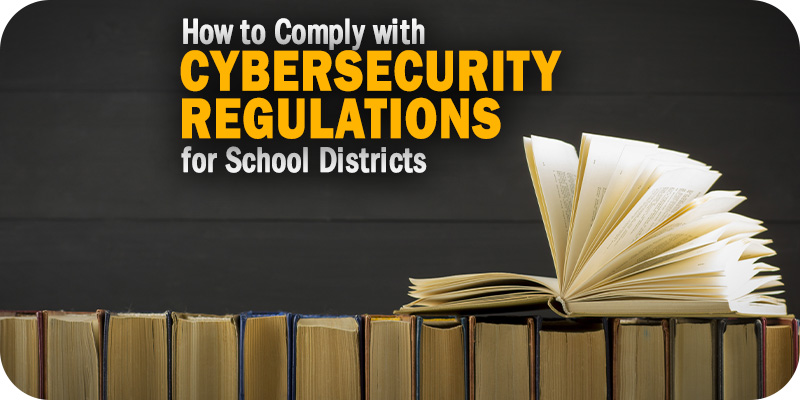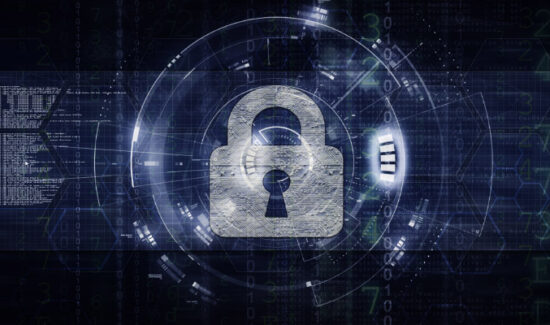How to Comply with Cybersecurity Regulations for School Districts

Solutions Review’s Contributed Content Series is a collection of contributed articles written by thought leaders in enterprise software categories. Charlie Sander of ManagedMethods takes us to school on complying with cybersecurity regulations for school districts.
The last decade has witnessed a profound transformation driven by the adoption of technology and the COVID-19 pandemic, which ushered in an era of distance learning and digital education platforms. However, alongside these advancements came an alarming surge in cyber-attacks targeting educational institutions. We are now in a place where an average of about 2300 attacks against educational organizations are being reported weekly.
Schools across the United States are grappling with a variety of cyber threats, leading to a legislative crackdown to safeguard learning continuity while protecting sensitive data. Here, we’ll take a closer look at data security regulations that schools need to adhere to and guide you through how to get started with compliance.
Cybersecurity Regulations for School Districts
Firstly, schools need to understand the regulation landscape by knowing what laws are in place and how to comply with them. Obeying the following cybersecurity regulations is vital not only for legal adherence but also for safeguarding sensitive student data and ensuring uninterrupted learning.
- FERPA: The Family Educational Rights and Privacy Act safeguards the privacy of student records, granting parents and eligible students access to their educational records while controlling the disclosure of personal information.
- PPRA: The Protection of Pupil Rights Amendment protects student privacy during specialized surveys, requiring parental consent for certain data collection activities.
- COPPA: The Children’s Online Privacy Protection Act imposes restrictions on the collection of personal data from children under 13.
- CIPA: The Children’s Internet Protection Act requires K-12 schools to implement internet safety policies, including content filtering, to protect students from inappropriate online material.
- State Laws: Any state-specific regulations will also come into play for a particular school, which often provide additional protections for student data.
Compliance with these regulations is vital to maintaining the integrity of a school’s digital environment, protecting sensitive information, and ensuring a secure learning environment for students.
Starting The Compliance Process
To embark on the long, winding journey of cybersecurity compliance, schools must follow a systematic approach that minimizes stress and cost overruns. Once schools have familiarized themselves with the regulations mentioned above, they need to conduct an internal audit of existing cybersecurity infrastructure. Evaluate your school’s digital systems, IT support, and cybersecurity awareness among staff and students.
The next step is to form a compliance team within your school district comprising IT professionals, educators, and administrators. This team will spearhead efforts to ensure a holistic approach to cybersecurity. They should develop a comprehensive cybersecurity policy and compliance plan tailored to your district’s needs, encompassing data protection, network security, incident response, and staff training.
Lastly, the school will need to invest in training and awareness: Cybersecurity is a collective responsibility. Simple measures like educating staff and students on secure password practices, log-out procedures, and safe internet usage can go a long way in bolstering security.
The Requirements to Stay Compliant
Once the compliance process is well underway, school boards must also perform a thorough diagnostic of their cybersecurity measures to identify gaps in compliance.
Implement Data Privacy Controls
Schools must proactively protect students against various online threats. Recent reports reveal that many K–12 students had their personal information compromised in data breaches, leaving them vulnerable to emotional, physical, and financial harm. Compliance starts with robust data privacy controls, and this is mandated by most states. These measures include encrypting sensitive personal information of both staff and students. Additionally, adhering to the FERPA and CIPA requires securing data storage and certifying an internet safety policy that blocks or filters explicit and harmful online content.
Follow CISA’s Best Practices
The Cybersecurity and Infrastructure Security Agency (CISA) 2023 report provides essential recommendations:
- Reduce immediate security risks by implementing high-priority security controls like multifactor authentication (MFA), patch management, data backups, and content filtering.
- Allocate resources in line with CISA’s Cross-Sector Cybersecurity Performance Goals (CPGs) to address critical security objectives.
- Develop a tailored cybersecurity plan aligned with the National Institute of Standards and Technology (NIST) Cybersecurity Framework for sustained security.
Undergo a Compliance Gap Analysis
Use compliance frameworks and guidelines provided by federal agencies like CISA to identify gaps in your cybersecurity practices. Regularly update your compliance checklist to stay current with evolving regulations. Complying with cybersecurity regulations is not just a legal requirement but a critical step in safeguarding educational institutions against cyber threats. By following a systematic approach, conducting diagnostics, and adhering to minimum regulations, schools can ensure a secure and uninterrupted learning experience for students while minimizing the risks associated with cyber-attacks.




















